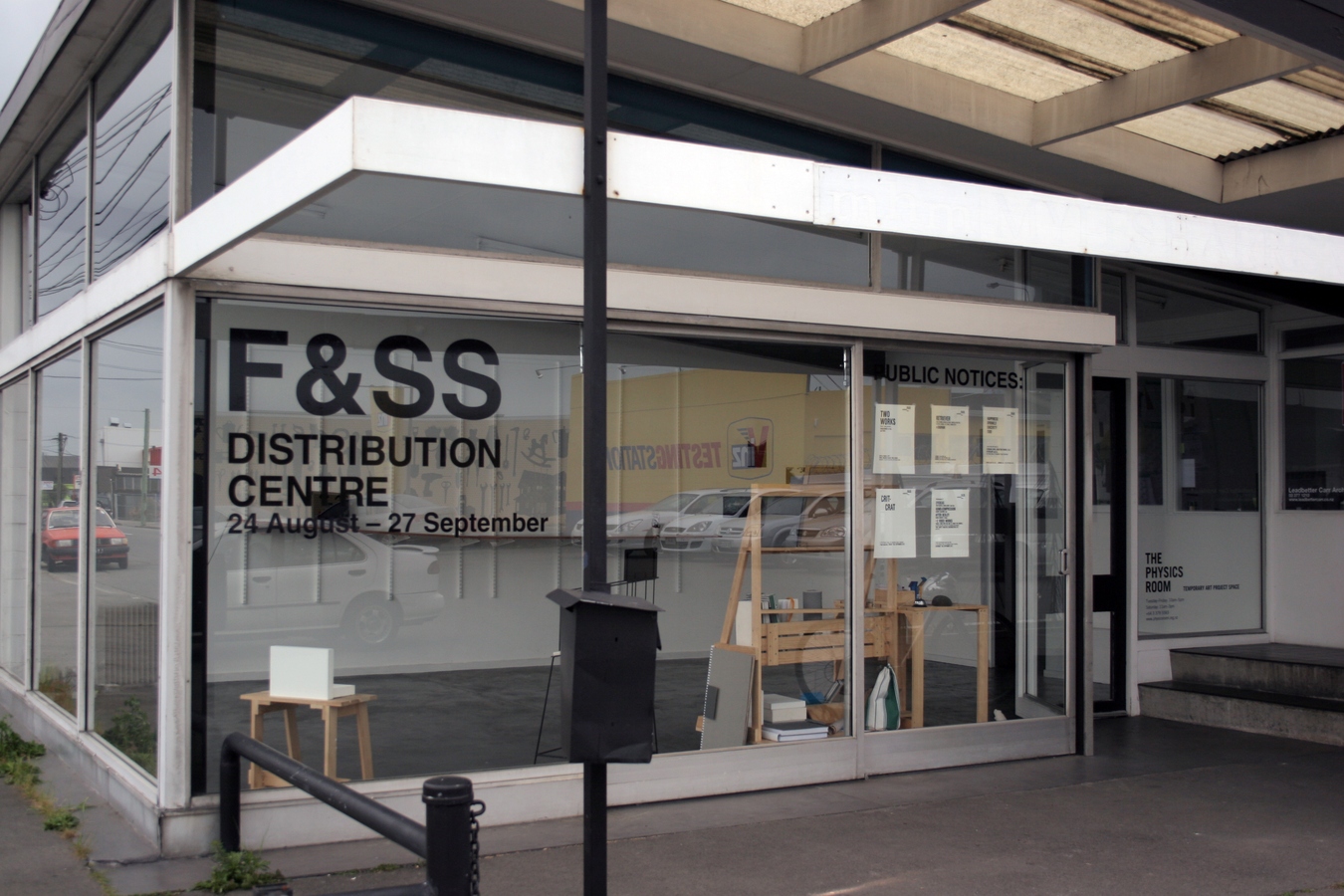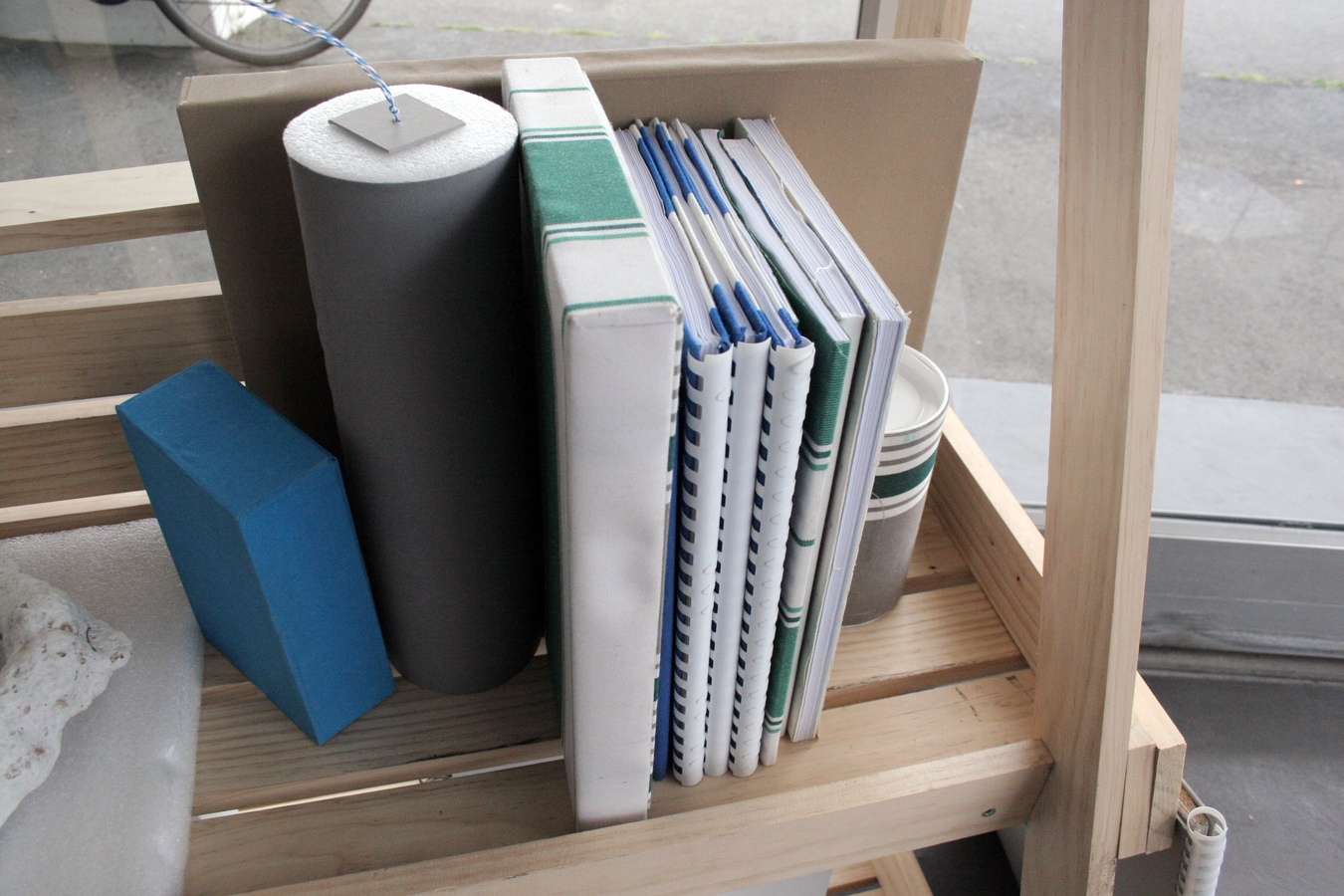Fiona Connor, Gilbert May & collaborators
F&SS
24 Aug — 27 Sep 2012
The F&SS Distribution Centre is an archive-based collaborative venture which supplements and extends the F&SS Lending Library (Fiona Connor and Gilbert May, exhibited Dunedin Public Art Gallery, 2012) into a materially generative source for multiple projects and realisations. The Distribution Centre and the Archive serve as a 'front' or 'mask' for breaking down a number of conventional modes for art's distribution and presentation, and also serve as a mirror through which the circulation and exchange of objects and information can be explored and distorted.
The archive sets a series of parameters which facilitate and structure ways that artists and other members of the public engage with the collection. Open to all, any item from the archive may be issued to anyone providing that public and common accessibility of the items is preserved. Although use is not prescribed in advance, F&SS will therefore endeavour to assist users to publish, exhibit, install etc further public/common 'responses' to the items so issued. These events/exhibitions etc may take place on or off-site and F&SS will provide paratextual assistance to these projects (publicity, distribution etc).
In one sense, the project as a whole is a paratext. The uniform packaging recalls not only 'archive fever', but the role of the frame in commodity distribution and circulation generally. Items in the archive from Masato Takasuka and Daniel Malone explicitly engage in the distortions of commodified distribution and examine both conceptual and iconographic rituals and structuring devices in capitalist modes of distribution. Layers of packaging, framing and their associated forms of circulatory valorisation are heavily emphasised by the forms of the archive and collaborators are already further developing these themes (often in the specific and problematic sphere relations between the 'artworld' and wider economic and institutional formations). The paratext, simultaneously a necessary opening and a delimiting closure, is a kind of paradigm for the ambiguities and conflicts between openness and exclusion, institution and 'ex-titution', form and content.








